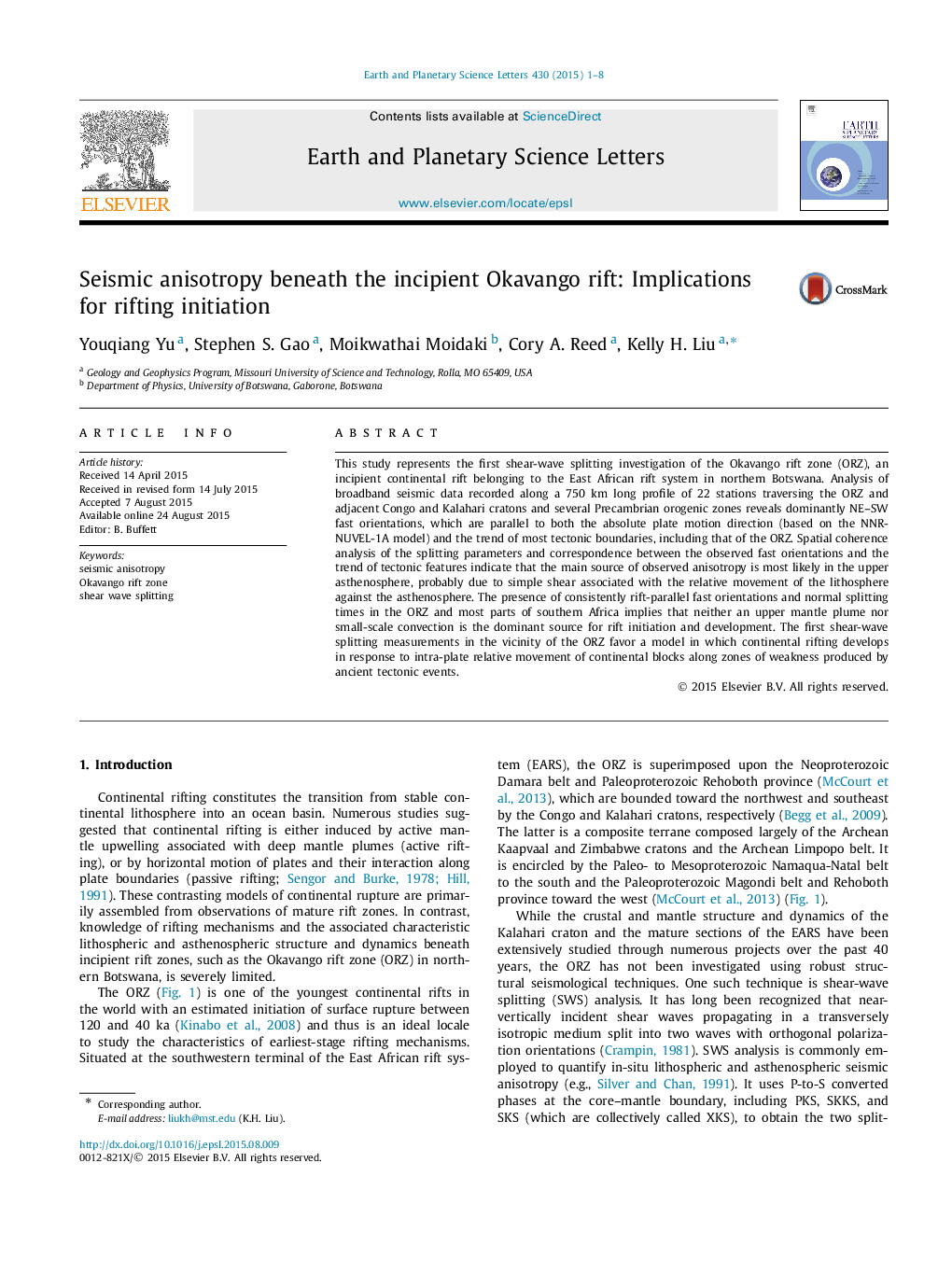| کد مقاله | کد نشریه | سال انتشار | مقاله انگلیسی | نسخه تمام متن |
|---|---|---|---|---|
| 6427902 | 1634726 | 2015 | 8 صفحه PDF | دانلود رایگان |

- This is the first shear-wave splitting study of the incipient Okavango rift.
- The fast orientations are mostly NE-SW and parallel to rift axis and APM direction.
- Observed anisotropy is inconsistent with plume or edge-driven convection models.
- The favored model for rift initiation involves intra-plate relative movement.
This study represents the first shear-wave splitting investigation of the Okavango rift zone (ORZ), an incipient continental rift belonging to the East African rift system in northern Botswana. Analysis of broadband seismic data recorded along a 750 km long profile of 22 stations traversing the ORZ and adjacent Congo and Kalahari cratons and several Precambrian orogenic zones reveals dominantly NE-SW fast orientations, which are parallel to both the absolute plate motion direction (based on the NNR-NUVEL-1A model) and the trend of most tectonic boundaries, including that of the ORZ. Spatial coherence analysis of the splitting parameters and correspondence between the observed fast orientations and the trend of tectonic features indicate that the main source of observed anisotropy is most likely in the upper asthenosphere, probably due to simple shear associated with the relative movement of the lithosphere against the asthenosphere. The presence of consistently rift-parallel fast orientations and normal splitting times in the ORZ and most parts of southern Africa implies that neither an upper mantle plume nor small-scale convection is the dominant source for rift initiation and development. The first shear-wave splitting measurements in the vicinity of the ORZ favor a model in which continental rifting develops in response to intra-plate relative movement of continental blocks along zones of weakness produced by ancient tectonic events.
Journal: Earth and Planetary Science Letters - Volume 430, 15 November 2015, Pages 1-8